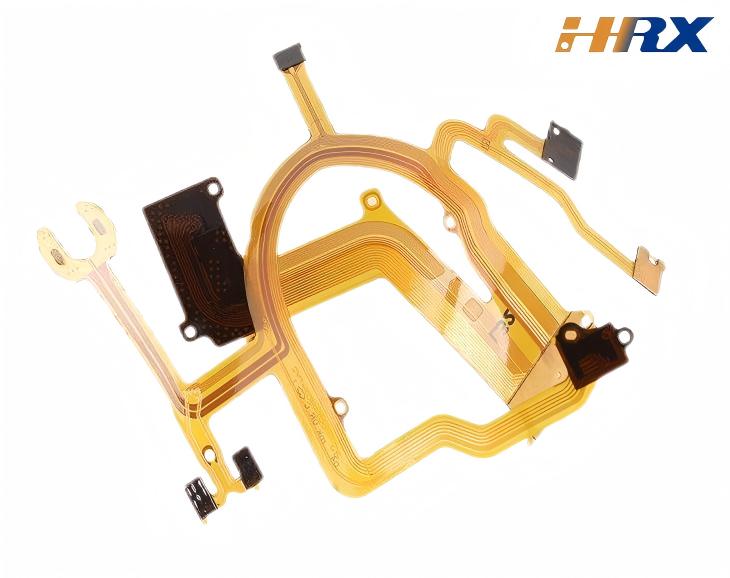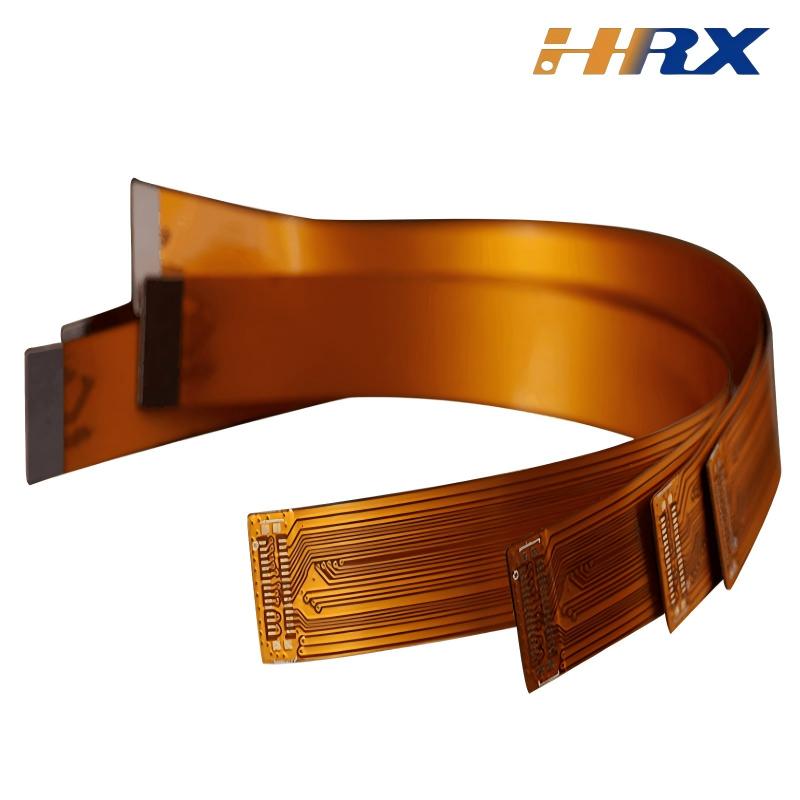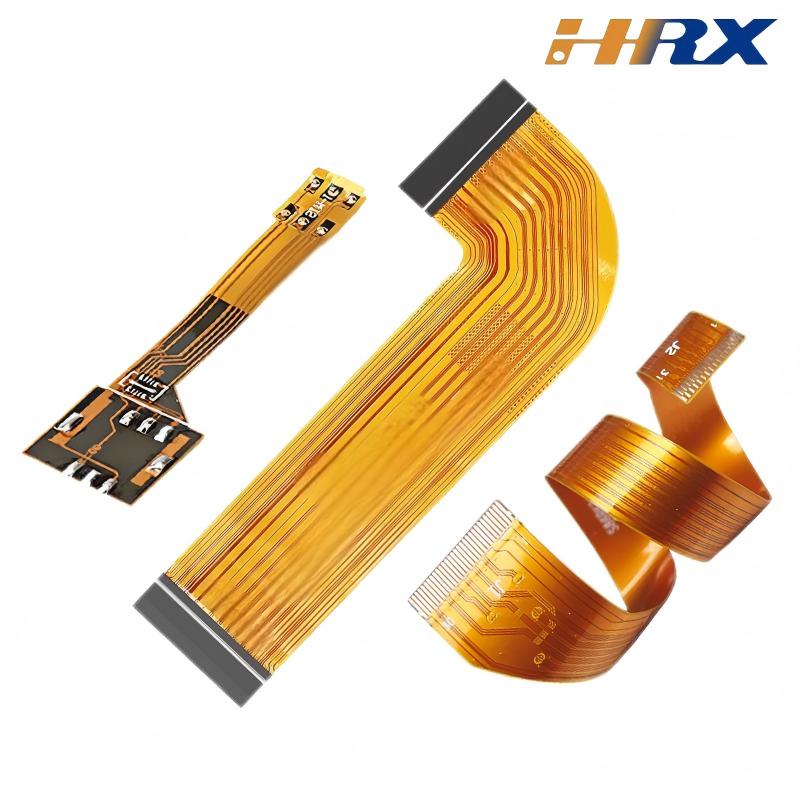Search
How to Evaluate the Quality of FPC Design and Production
- May 24,2025
-
Share
Flexible Printed Circuits (FPCs) are critical components in modern electronics, demanding rigorous quality evaluation to ensure reliability, performance, and compliance with application requirements. Whether for aerospace, medical devices, or consumer electronics, assessing FPC quality involves a systematic review of design integrity, material selection, manufacturing precision, and testing protocols. Below is a comprehensive guide to evaluating FPC quality, with insights from Shenzhen Huaruixin Electronics Co., Ltd.—a leading global ODM/OEM manufacturer specializing in high-precision FPC, PCB, and rigid-flex solutions.

1. Design Quality Assessment
The foundation of a high-quality FPC lies in its design. Key evaluation criteria include:
a. Electrical Performance
Signal Integrity: Ensure the design minimizes crosstalk, impedance mismatches, and signal loss. Use simulation tools (e.g., ANSYS, HyperLynx) to validate trace routing, layer stacking, and grounding strategies.
Impedance Control: Verify that impedance values (e.g., 50Ω for high-speed signals) align with design specifications. Poor control can cause signal reflections and system failures.
Thermal Management: Assess thermal vias, copper weight, and material selection (e.g., thermally conductive adhesives) to prevent overheating in high-power applications.
b. Mechanical Robustness
Flexibility & Bending Radius: Confirm that flex zones are designed with appropriate bending radii (typically 3–5 times the material thickness) to avoid fracturing. Overly tight bends can damage traces or dielectrics.
Stress Relief Features: Check for relief notches, rounded corners, or reinforced stiffeners to mitigate mechanical stress during assembly or operation.
Layer Registration: Ensure precise alignment of conductive layers and dielectrics to prevent short circuits or open circuits in multi-layer FPCs.
c. Material Compatibility
Base Films: Evaluate the choice of polyimide (PI) or polyester (PET) films. PI offers superior thermal stability (up to 280°C) for harsh environments, while PET is cost-effective for low-temperature applications.
Adhesives & Dielectrics: Assess adhesive thickness and curing processes to ensure bond strength and dimensional stability. Poor adhesion can lead to delamination.
Cover Layers: Verify coverlays or solder masks are correctly specified (e.g., PI coverlays for high-flex applications) to protect traces and enhance flexibility.
2. Manufacturing Process Evaluation
FPC production requires precision in every step. Key manufacturing quality indicators include:
a. Trace Geometry & Tolerances
Line Width/Spacing: Use optical microscopy or automated optical inspection (AOI) to check that trace widths and spacing meet design specs (e.g., ±10% tolerance for fine-pitch traces). Undersized traces may overheat; oversized spacing reduces density.
Via/Pad Alignment: Ensure vias are centered on pads and free of annular rings or misalignment, which can cause open circuits.
b. Surface Finish & Plating
Copper Thickness: Measure plating thickness (e.g., 18–35μm for standard applications, 50+μm for high-current designs) using eddy current testing or cross-sectional analysis. Inadequate plating reduces conductivity and durability.
Surface Treatments: Evaluate finishes like ENIG (Electroless Nickel Immersion Gold) or OSP (Organic Solderability Preservative) for solderability and corrosion resistance. Poor finishes can lead to solder joint failures.
c. Flexibility Testing
Bend Cycle Testing: Subject samples to repeated bending (e.g., 10,000 cycles) to simulate real-world use. Inspect for trace cracks, delamination, or insulation damage using microscopy or electrical continuity tests.
Torsion & Tension Tests: Assess how FPCs withstand twisting or pulling forces, common in dynamic assemblies (e.g., robotics, wearable devices).
d. Defect Detection
AOI and X-Ray Inspection: Automated systems can identify shorts, opens, or missing components. X-ray imaging is critical for multi-layer or buried via FPCs to check internal layer alignment.
Electrical Testing: Use flying probe or bed-of-nails testers to verify 100% electrical continuity and isolation between traces.
3. Compliance with Standards and Specifications
Quality FPCs must adhere to industry standards and customer requirements:
IPC Standards: Ensure compliance with IPC-2223 (Flexible Printed Circuit Design) and IPC-A-600 (Acceptability of Printed Boards). For example, IPC-A-600 specifies acceptable levels of surface defects, trace roughness, and solder mask coverage.
RoHS/REACH Compliance: Verify that materials are free of hazardous substances (e.g., lead, halogen) for environmental and regulatory compliance.
Customer-Specific Requirements: Check for adherence to design files, tolerances, and application-specific criteria (e.g., medical device biocompatibility or automotive vibration resistance).
4. Reliability and Environmental Testing
FPCs must perform reliably in target environments. Key tests include:
Thermal Cycling: Subject samples to rapid temperature changes (e.g., -40°C to 125°C) to evaluate material expansion/contraction and trace integrity.
Humidity and Corrosion Testing: Use salt spray or damp heat tests (e.g., 85°C/85% RH for 1,000 hours) to assess resistance to moisture and chemical degradation.
Vibration and Shock Testing: Simulate real-world mechanical stress to identify loose components or fractured traces.
5. Partnering with a Trusted Manufacturer: Shenzhen Huaruixin’s Expertise
As a leading FPC manufacturer, Shenzhen Huaruixin integrates rigorous quality control at every stage:
Design Support: Our team uses advanced CAD tools (e.g., Altium, Mentor Graphics) to optimize layer stacks, impedance control, and flex geometry for performance and manufacturability.
State-of-the-Art Manufacturing: We employ precision laser drilling, automated plating lines, and AOI/X-ray inspection to ensure trace accuracy and defect-free production.
Custom Testing: From bend cycle validation to thermal profiling, we offer tailored testing to meet your application’s unique demands.
Certifications: Our facilities comply with ISO 9001, IPC, and RoHS standards, ensuring consistent quality and regulatory compliance.
Evaluating FPC quality requires a holistic approach, spanning design robustness, manufacturing precision, and rigorous testing. By partnering with an experienced manufacturer like Shenzhen Huaruixin Electronics Co., Ltd., you gain access to end-to-end quality assurance—from material selection to final inspection. For high-reliability FPC solutions, contact us at sales@hrxfpc.com or visit www.hrxfpc.com to explore our capabilities. Trust in our expertise to deliver FPCs that meet the most demanding standards of performance and durability.

Let’s talk! We’ll provide the perfect solution for you!
-
 Huaruixin Electronics mainly produces printed circuit boards as the core business, to provide customers with one-stop solutions for FPC/PCB production, components sourcing and Assembly.
Huaruixin Electronics mainly produces printed circuit boards as the core business, to provide customers with one-stop solutions for FPC/PCB production, components sourcing and Assembly. - WHAT WE DO — PCB Design Solutions — Flex PCB Production — Components Sourcing — FPC&PCB Assembly
- PRODUCTS — Single Sided Flexible Circuits — Double Sided Flexible Circuits — Multilayer Flexible Cirucits — Rigid-Flex Circuits — FPC Assembly — PCB Assembly
- CAPABILITY — FPC Capability — Rigid-Flex Capability — PCB Capability — Assembly Capability
- Copyright © 2024 Shenzhen Huaruixin Electronics Co., Ltd. All Rights Reserved.
- Design By BONTOP


